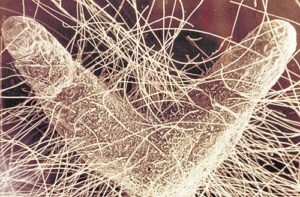By Jessica Cortell (excerpt from Oregon Wine Press)
Link to Original Article: http://www.oregonwinepress.com/dirt-biodiversity
 How often do we contemplate the biodiversity of soils and what it means to healthy vineyards and for that matter, a healthy planet? The main four components of soil are water, air, minerals and organic matter. The organic component of soil is around 3 to 10 percent in Willamette Valley soils but is often overlooked in its importance.
How often do we contemplate the biodiversity of soils and what it means to healthy vineyards and for that matter, a healthy planet? The main four components of soil are water, air, minerals and organic matter. The organic component of soil is around 3 to 10 percent in Willamette Valley soils but is often overlooked in its importance.
Living soil microorganisms are less than 5 percent of the total organic component. Soils are among the most diverse ecosystem on Earth. Soil biodiversity includes all organisms living in the soil, which can be broken down into macro, mesa and micro-fauna. They can also be organized by the functions they perform in the soil. Without us paying much attention, this multitude of organisms is carrying out many important functions right under our very own feet.
The soil microorganisms can be regarded as the “biological engine of the earth.” They are involved in most of the key functions soil provides such as nutrient uptake, nutrient cycling, soil aggregate formation, degradation of pollutants, suppression of soil-borne diseases and regulation of plant communities. Also, soil microbial processes play key roles in mediating global climate change.
What about in vineyards? What roles do these organisms play and what practices are detrimental to them? About 20 years ago, many vineyards in Oregon had the “scorched earth” look where all vegetation but the vines were killed with herbicides. Luckily, the industry has come a long way since then in understanding, improving and maintaining soil biodiversity in vineyards.
When it comes to microbes, it is all about relationships. Here we will focus on a relationship between the grapevine and a specific type of fungi. The surface area that can be explored is the key to water and nutrient uptake by grapevine roots. While large roots anchor the vine and medium roots store nutrients, the fine roots are responsible for uptake. Better yet, grapevines have co-evolved for thousands of years with arbuscular mycorrhizal (AM) fungi to assist with nutrient uptake. Fossil evidence suggests that this mutually beneficial relationship with plants appeared around 400 to 600 million years ago when plants were first colonizing land.
These fungi have a relationship with grapevines in which they trade carbohydrates from the vine’s roots for improvements in uptake of water and nutrients. The fungus actually lives inside the root and forms a fungal structure known as an arbuscule inside the root cells. Arbuscules are tree-shaped structures that are responsible for nutrient exchange between the plant and the fungus. The fungus has an extensive network of hyphae outside of the root to absorb water and nutrients.
This fungal relationship has many benefits for the grapevine, including the ability to explore and take up nutrients from a greater soil volume, the hyphae have a greater ability to take up phosphorus, the hyphae can explore smaller soil pores and the hyphae can help support healthy soil aggregation for aeration and movement of water in the soil pores.
Mycorrhizal fungi play an important role in the uptake of phosphorus. Phosphorus is important in phosphate groups in ATP and ADP, which is the energy currency used by plants and animals. In general, phosphorus levels are quite low in Willamette Valley soils, and the amount of phosphorus in the soil solution is extremely low. In addition, phosphorus movement in the soil is very slow. As plants need to take up inorganic phosphate from the soil solution, it is surprising grapevines are able to pull up much phosphorus at all. However, it is the fungi that make it happen.
Even more fascinating is that the fungal hyphae can create an extensive network and connect roots on multiple vines and other species of plants. In one study, it was shown that fungal hyphae could connect the grapevines to the cover crop growing in a vineyard and minerals were found to move via the hyphae highway from the cover crop to the grapevines (Baumgartner, 2006). This helps explain how phosphorus even at low levels in the soil can move into the vine.
Improvements in phosphorus uptake have added benefits of improving drought tolerance in grapevines. One way mycorrhizal uptake of phosphorus helps is in allowing the grapevine roots to grow deep in the soil profile to take up water instead of growing shallow near the surface searching for phosphorus.
As far as practical applications in the vineyard, growers can encourage AM fungi by planting cover crops of mixed legumes and grasses or other species (except mustards as they are detrimental) and doing minimal cultivation of the cover crops in order to minimize disruption of the hyphae. In one study, mycorrhizal colonization increased from 4.7 percent in conventional management to 15.9 percent under organic management. Synthetic phosphorus fertilizers were found to be detrimental to AM fungi. Most Oregon vineyards plant cover crops regardless of the production system and use minimal amounts of synthetic fertilizers.
For new plantings, using field-grown vines are preferred as they will already have associations with Mycorrhizae fungi. For potted vines grown in sterile media, they could be inoculated at planting but another approach is to grow a cover crop in the soil prior to planting the vines so the AM fungi will already be present in the soil and can colonize the young vines quickly.
Link to Original Article: http://www.oregonwinepress.com/dirt-biodiversity
COPYRIGHT 2015 Oregon Wine Press

